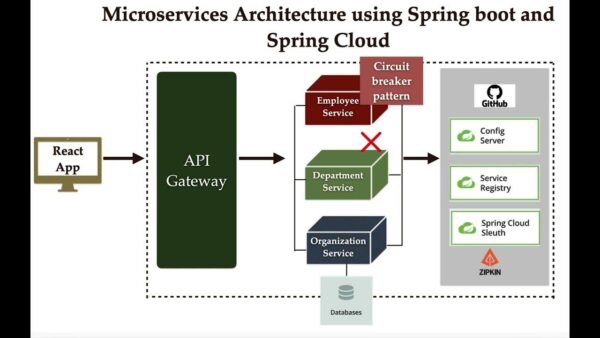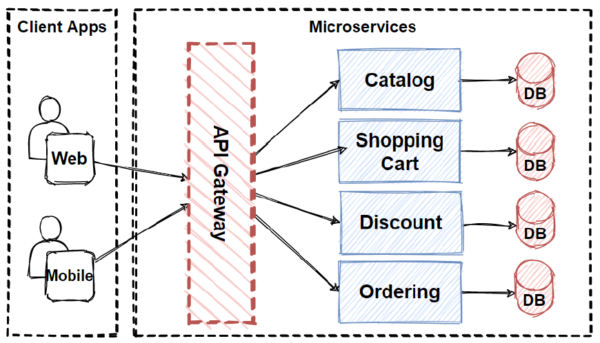7 Best Practices for Spring Boot Microservices Every Full‑Stack Developer Should Know
Introduction
In the world of modern web development, Spring Boot Microservices have become the backbone of scalable, maintainable backend systems. For full-stack developers, mastering the art of building and managing microservices with Spring Boot is essential to deliver robust applications with Spring Boot Microservices that integrate smoothly with front-end frameworks such as React or Angular.
This guide will walk you through 7 best practices every full-stack developer should know to build resilient, scalable, and secure microservices using Spring Boot.

1. 🎯 Design for Independent Deployment
The essence of microservices lies in their ability to be deployed independently. Each microservice should be loosely coupled and communicate using lightweight protocols like REST or messaging queues such as RabbitMQ or Kafka.
Independent deployment boosts agility and reduces downtime by allowing updates or fixes to individual services without impacting others.

2. 🔍 Use Spring Cloud for Service Discovery and Configuration
Managing multiple services requires a robust system for service discovery and configuration. Spring Cloud tools like Eureka provide dynamic service registration, while Spring Cloud Config centralizes configuration management.
These tools ensure your microservices can locate each other efficiently and maintain consistent configurations across environments.
Learn more in the Spring Cloud official docs.
@EnableDiscoveryClient
@SpringBootApplication
public class ProductServiceApplication {
public static void main(String[] args) {
SpringApplication.run(ProductServiceApplication.class, args);
}
}
3. 🚪 Implement an API Gateway
An API Gateway is vital for handling routing, security, rate limiting, and monitoring. Use Spring Cloud Gateway or Netflix Zuul to provide a single entry point for client requests.
This approach simplifies cross-cutting concerns and enforces security policies at the gateway level.

4. ⚠️ Handle Failures Gracefully (Circuit Breaker Pattern)
Failures are a reality in distributed systems. Circuit breakers prevent cascading failures by detecting faults and stopping requests to failing services temporarily.
Integrate libraries like Resilience4j or Hystrix with Spring Boot to enhance fault tolerance.
@CircuitBreaker(name = "paymentService", fallbackMethod = "fallbackPayment")
public String callPaymentService() {
return restTemplate.getForObject("http://PAYMENT-SERVICE/api/pay", String.class);
}
5. 🔐 Secure Microservices with Spring Security & JWT
Security should be a priority from the start. Use Spring Security along with protocols like OAuth2 or JWT (JSON Web Tokens) to authenticate and authorize requests to your microservices.
By securing each microservice, you protect sensitive data and prevent unauthorized access, which is vital for any enterprise-grade application.
Learn more about securing your apps from the Spring Security documentation.
@Override
protected void configure(HttpSecurity http) throws Exception {
http.csrf().disable()
.authorizeRequests()
.antMatchers("/api/public/**").permitAll()
.anyRequest().authenticated()
.and().sessionManagement().sessionCreationPolicy(SessionCreationPolicy.STATELESS);
}
6. 🧪 Write Comprehensive Tests
Quality assurance is key. Use JUnit and Mockito for unit and integration testing your microservices. Thorough testing ensures reliability and simplifies maintenance.
@Test
public void testGetProduct() {
Mockito.when(productService.getProductById(1L)).thenReturn(new Product(1L, "Book"));
mockMvc.perform(get("/api/products/1"))
.andExpect(status().isOk());
}
7. 📊 Monitor and Log Spring Boot Microservices Effectively
Monitoring and logging help maintain healthy services. Use Spring Boot Actuator for metrics and health checks. Combine with centralized logging solutions like the ELK Stack (Elasticsearch, Logstash, Kibana) or Prometheus and Grafana for full observability.
Example:
management:
endpoints:
web:
exposure:
include: "*"
🔍 How Full-Stack Developers Benefit from These Practices
Following these best practices lets full-stack developers create backend services that scale and integrate smoothly with frontend frameworks like React or Angular. These practices ensure your REST APIs are robust, secure, and maintainable.
Use tools like Postman for API testing during development.
🎯 Why Learning Spring Boot Microservices is a Smart Career Move
The demand for developers skilled in Spring Boot Microservices is skyrocketing, especially in full-stack roles that require both frontend and backend expertise. By mastering these best practices, you position yourself to work on complex, enterprise-grade applications with top tech companies.
Our Full Stack Development Course is designed to give you hands-on experience with all these concepts. Whether you’re a beginner or looking to upskill, our course and free webinars will guide you step-by-step.
🛠️ How You Can Start Today
👉 Register for our free webinar – get real-world insights from our industry experts.
👉 Contact us to Enroll in our Full Stack Development Course – hands-on learning, live sessions, and project experience.
✅ 🧾 Conclusion
Mastering Spring Boot Microservices isn’t just about writing code — it’s about writing scalable, secure, and resilient systems. ⚙️
Implementing these 7 best practices will make your applications production-ready and your skillset future-proof. 📌
🎯 Don’t wait — take that next step in your development journey.
👉 Register now for our free webinar or join our Full Stack Development Course today!
📞 Want More Info?
📱 WhatsApp us for quick queries 👉 Drop a WhatsApp Msg
👉 Follow us on Facebook, Instagram, and LinkedIn to stay updated on upcoming webinars, courses, and exclusive updates.


